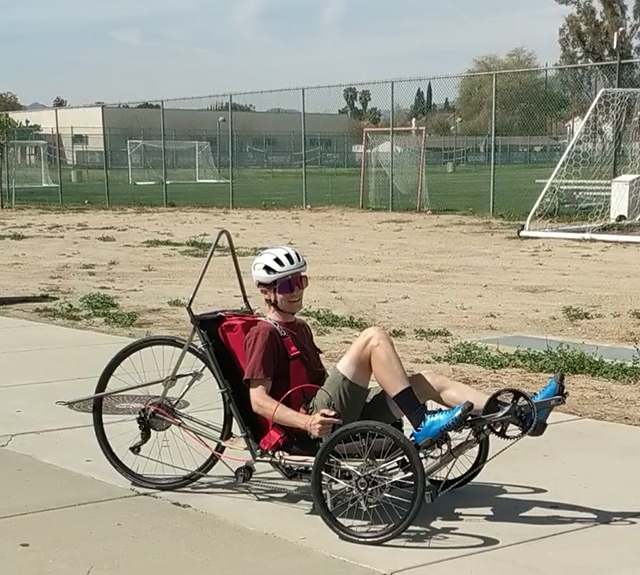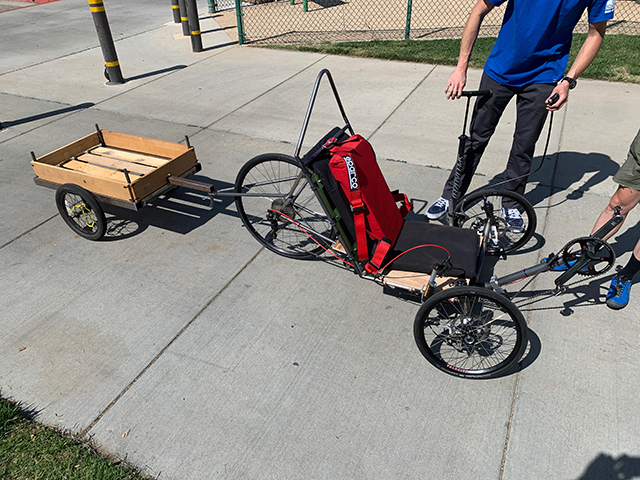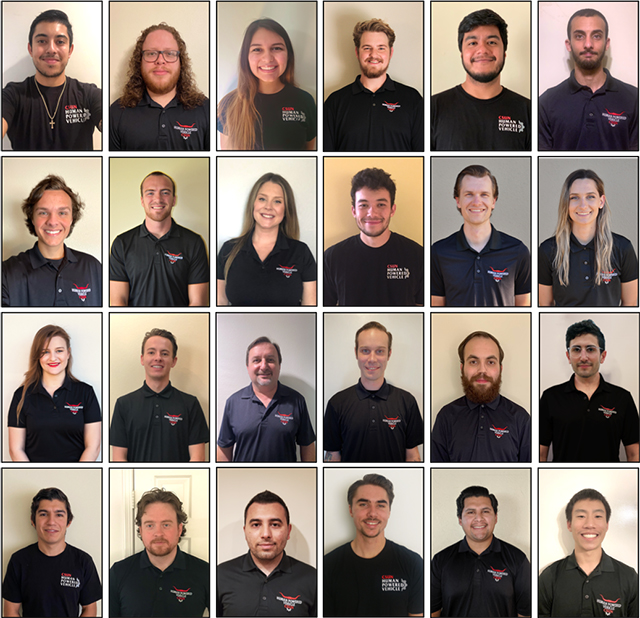CSUN’s Human Powered Vehicle Team Places Second at Global Competition
CSUN mechanical engineering students placed second at the 2020 American Society of Mechanical Engineers’ (ASME) Human Powered Vehicle Challenge, hosted online April 25.
Originally scheduled to take place April 3-5 on the Michigan State University campus, the worldwide engineering competition and conference went virtual through Zoom, due to COVID-19. Attendance was still high, as 35 universities gathered online to show off their human-powered vehicles.
CSUN’s Human Powered Vehicle team, a senior design team made up of 23 mechanical engineering students, swept top contenders including USC, Harvard and UC San Diego in the Human Powered Vehicle Challenge. This marked the third year in a row Matadors have placed among the top three winning universities.
The challenge encourages mechanical engineering students to demonstrate their engineering, analysis and manufacturing knowledge by designing and building a sustainable, human-powered vehicle.
The CSUN vehicle, called “El Matador,” has been in the works for the past year as part of a two-semester senior design project. The team spent the first semester researching and designing the vehicle and the second semester building and testing it.
Typically, the challenge requires that teams submit their finished vehicles along with a full engineering design technical report and a safety video, in order to compete in race challenges that test their vehicle’s endurance and speed.
This year, to compensate for the races being cancelled, ASME allowed students to showcase their work with a six-minute video featuring footage of their team’s finalized vehicle.
“We included footage of some of our team riding our actual vehicle, to demonstrate how well it performed,” said Annabel Weddle, a graduating senior and chief project engineer for the CSUN team. “It was a challenge to wrap up a year’s worth of work into a six-minute video, but my team was able to successfully do so.”




 experience
experience